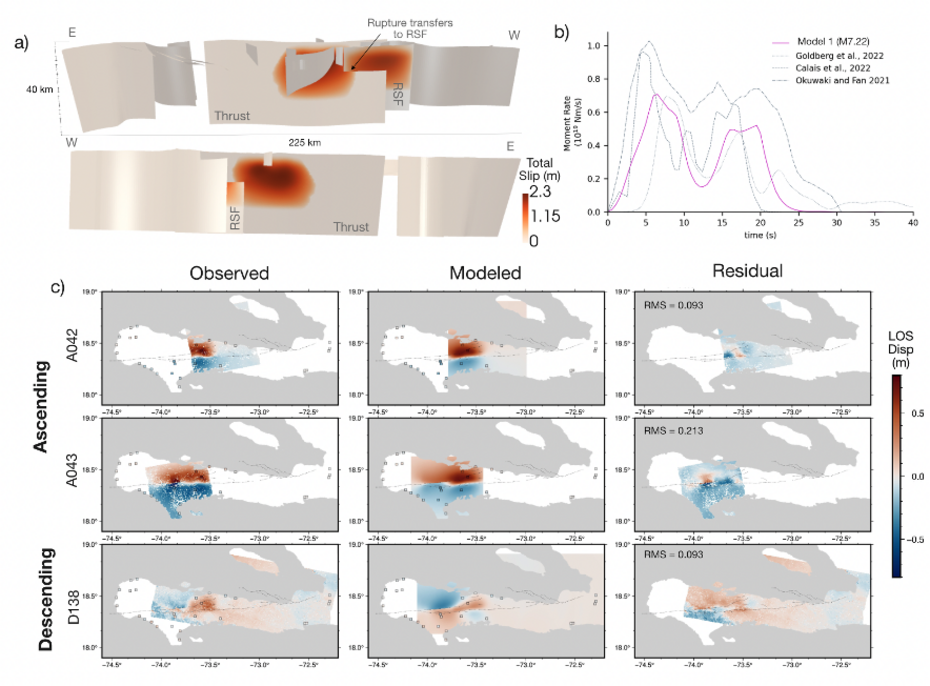
Geo-INQUIRE Transnational Access Project Report: Haiti-drm from Zoe Yin (UCSD, U.S.)
Geo-INQUIRE installation: SeisSol-ExaHyPE - Earthquake simulation, wave simulation and hyperbolic PDE systems (TA2-531-1)
Project title: Using InSAR-derived secondary fault structures to constrain a dynamic rupture model of the 2021 M7.2 Haiti earthquake
Transnational access principal investigator: Zoe Yin (University of California San Diego, U.S.)
Project acronym: Haiti-drm
Project report ID: C1_TA2-531-1_2 (1st Call)
Transnational access team: Dr. Mathilde Marchandon, Prof. Dr. Alice-Agnes Gabriel, Iris Christadler (Ludwig-Maximilians-Universität München (LMU), Germany)
Date of visit: 17 - 21 July 2024
Geo-INQUIRE Virtual Access:
Data/Products:
Project report:
The 2021 Mw 7.2 Haiti earthquake was a devastating event which occurred within the Enriquillo Plantain Garden Fault Zone (EPGFZ). It is not well-understood why neither the 2021 nor the prior 2010 Mw 7.0 earthquake were purestrike slip events and, instead, ruptured with distinct patches of dip slip and strike slip motion on largely separate fault planes.
During her stay in LMU, Zoe has learnt to use SeisSol and started developing dynamic rupture simulations for the 2021 Haiti earthquake. We first built a detailed fault system geometry comprising 17 fault segments, which includes the two main faults that broke during the earthquake (an unnamed Thrust Fault and Ravine du Sud Fault), along with surrounding regional and secondary faults. Zoe then developed a set of dynamic rupture scenarios to evaluate under which conditions the peculiar characteristics of the event could be reproduced.
We find that along-strike changes in the frictional strength of the Thrust Fault as well as lateral changes in the regional stress shape and orientation are key to reproducing the rupture transfer from the Thrust Fault to the Ravine du Sud Fault, the slip rake partitioning, the main characteristics of the InSAR surface deformation, and the multi-peak source time function. The best-fit model is shown in Figure 1.
Zoe’s results have been submitted to Journal of Geophysical Research: Solid earth (preprint: https://eartharxiv.org/repository/view/8231/).
